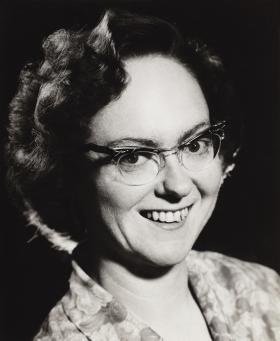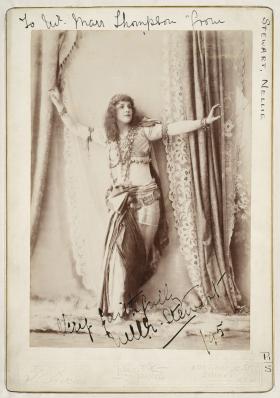I’ve been thinking about addiction. Partly because I have spent the past three years researching and writing a biography of the Australian novelist Gillian Mears, a self-described addict; partly because I feel an acute sense of loss in emerging from Mears’ expansive archive.
Working in an archive can be an immersive and addictive experience. In a 1994 lecture, the French philosopher Jacques Derrida spoke about what he termed ‘archive fever’, a ‘compulsive, repetitive, and nostalgic desire for the archive’. I know the grip of such fever.
I first experienced the joy of sustained archival research while working in Helen Garner’s embargoed archives in the National Library of Australia. On completing A Writing Life: Helen Garner and her Work (2017), I began casting around for another project. Just one more time, I told myself, one more stint in the archive of a female Australian author.
I considered Gillian Mears to be one of the most interesting and important Australian writers of the last 40 years. Born in 1964, she was of the generation that came after Garner, Kate Grenville and Beverley Farmer, all of whom she counted as mentors and friends. Over 30 years, Mears published three award- winning novels, nearly 200 stories, poetry, feature journalism and a children’s book. She is perhaps best known for her 2011 novel Foal’s Bread, a powerful and tragic story of love, ambition and loss which won the Prime Minister’s Literary Award for Fiction in 2012. In May 2016, after living for decades with the increasingly debilitating effects of multiple sclerosis, Mears chose to end her life.
As a writer and person, Mears grappled with country-town dynamics and the opportunities afforded to girls, environmental degradation, migrant belonging, white privilege, power and gender relationships, fluid sexual identity and living with a grave disability. When a friend mentioned that Mears had made scrapbooks and deposited them in the Mitchell Library, I was hooked — and later amazed. Mears' archive turned out to be one of the largest collections of literary papers in the Library's holdings. After careful negotiations with the archivists, I met Mears’ immediate family and began the process of obtaining the necessary permissions to dive in.
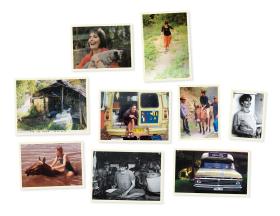
For much of 2018 and 2019, I arrived at the Mitchell each morning, just prior to the bronze doors swinging open. I came to recognise the regulars who, once inside the reading room, quickly settled into work at their preferred desks. Alongside them, waves of HSC students prepared for looming exams. In the special collections area older couples researching family history came and went, elderly gentlemen made enquiries about the Library’s historic parish documents and a smattering of academics like myself appeared to be in for the long haul. I relished the sense of community and common purpose. To a large extent though, once my nominated archival box was retrieved, weighed and handed over, all else faded.
In the archive, real time and place dissolve. Time becomes the time of the archive, which is necessarily time past. Mears recorded her risky and adventurous life in meticulous, and sometimes chaotic, detail. To read through her papers was to journey through her tumultuous love affairs, travel escapades, extraordinary literary successes, personal and professional crises, debilitating illness and dance with death. Hours passed while I witnessed her fight a near fatal case of endocarditis, travel solo around the country in a reconditioned 1970s ambulance, and undergo shamanic cleansing rituals in the Venezuelan Andes.
While the archive houses the past, it always has an eye to the future. Aware that she was amassing material for posterity, Mears strove to shape and control the narrative that she was certain would be told of her life. On the one hand, she considered her note-keeping to be a secretive impulse related to her addictive personality and thought no one would ever understand her multi-layered hidden depths. On the other, she poured her most intimate thoughts, sexual fantasies, daily news and literary ruminations into her diaries, and took calculated steps to ensure that one day they would become very public.
Over the years, Mears returned to and emended the diaries before sending them off to the Library. Those later comments were invaluable for understanding the trajectory of her self-awareness.
More surprising was a note I came across from 1997. As she made a case for depositing what was the second tranche of her papers in the Mitchell, Mears explicitly addressed her imagined biographer:
something in me views the historical record as very important, even if it is only a record of a barely successful writer’s health in the late 20th C or her life in a small town. A sentence or 2 that makes her laugh or that brings him closer to a feeling of enlightenment. (Although I have to say, whenever I do think fleetingly of a reader of this of the future, I always imagine a young woman, with time on her hands obviously and a shy manner.) Sometimes I think I know her. Perhaps she will be me again, reborn, and still searching for the answers I hope to find in my writing.
Anyway, whoever you are, hello, I acknowledge you may exist when I am dead and that you’d prefer I wrote in my mother’s hand, which is so large and flowing and easy to read. Conscious that I was being played, I became even more intrigued. Mears’ direct and repeated overtures to her biographer, which continued throughout the years, complicated and enriched the sense of intimacy and connection to the subject that a biographer inevitably develops in the archive.
Journalist Janet Malcolm, who critiqued the ethics of biography while spending her professional life dedicated to it, compared the biographer to a ‘professional burglar, breaking into a house, rifling through certain drawers that he has reason to think contain jewellery and money, and triumphantly bearing his loot away’. It is true that there are those jaw-dropping moments of discovery, instantly recognisable for their worth. Some of them will make their way into print, others the biographer will judge to be best left undisturbed.
There are also moments of sheer delight: for example, Mears’ remembrance of approaching Patrick White in Centennial Park to autograph her copy of The Vivisector. ‘You hold the dogs then,’ he grumbled, and the 17-year- old ‘held his pugs on a type of long rope as if sailing them like kites’. Elsewhere Mears described Helen Garner, who attended a UTS seminar delivered by Raymond Carver, as ‘a small woman who eats cherries with efficiency and grace’.
Compulsively shy, Mears delighted in cultivating ‘paper friends’. She was a prolific correspondent with a wide range of people, including many of Australia’s best-known writers, artists and photographers. Her archive contains thousands of letters, including extensive correspondence with Garner, Gerald Murnane and Elizabeth Jolley; letters that reveal much about subjects beyond the particular archive.
In her essay ‘A House of One’s Own’, Malcolm suggests that when we are reading letters ‘we understand the impulse to write biographies, we feel the intoxication the biographer feels in working with primary sources, the rapture of firsthand encounters with another’s lived experience’. It was fascinating to discover that Mears, who often used letters as a form of flirtation, crafted them over multiple drafts. She seemed always to have an eye to the historical record. Periodically, she sent stamped, self-addressed envelopes to her sisters and select others asking that her letters be returned at the end of each year.
In 1995, when Mears made her first substantial deposit of letters to the Library, she tried to convince herself that she was doing so for tax relief as well as for the sake of her current relationship:
I don’t believe old love letters have a place in our present. I don’t believe it is a good idea for them to lie around in filing cabinets, waiting for readers’ eyes who shouldn’t see them. I prefer the thought of them in the State Library archives where one day I will visit, perhaps when I am in my 40s or 50s, 60s or 70s and marvel and marvel and read properly all the words that people who were once also young wrote to me.
For some correspondents the sense of betrayal was devastating. On discovering what she had done they insisted she place caveats on their letters being accessed without their permission. Mears did so and the caveats still stand. In his 2019 story collection Womerah Lane: Lives and Landscapes the artist Tom Carment writes that reading his letters to Mears in the Library after her death ‘felt strange and slightly uncomfortable’. For me, being a similar age to Mears and reading the letters when she could not, the experience was poignant, sometimes riveting and eventually, given their sheer volume, exhausting.
A writer’s archive invariably leads to other archives. These letters led me to the Library’s holding of Elizabeth Jolley’s letters, to Leigh Summers’ archive and to Janet Hawley’s papers in the National Library. Mears’ one-time lover, writer Alan Close, gave me nearly six kilograms of their correspondence, which will soon be added to the Library’s collection. The composition of the archive continues to grow.
Of course, it was not all romance. On a physical level, the long days I spent in uncomfortable chairs pouring over documents led to significant back, neck and eye strain. Also, an archive which extends to 27 metres of material held in 154 boxes —and includes, in addition to the thousands of letters, emails and text messages, manuscript drafts, newspaper articles and reviews, notebooks, hundreds of diaries, nearly 6000 photographs and over 4000 negatives, 30 hours of sound recordings, 200 drawings and paintings, pressed flowers, school reports and a weight of torn cardboard and scraps of paper covered with Mears’ writing — felt, more than once, overwhelming.
Indeed there came a point, after some difficult weeks pouring through extensive diary entries detailing Mears’ emotional pain and psychological darkness, when I sought escape. It is not only time and place that seem to dissolve in the archive, but also the essential barrier between researcher and subject. Being immersed in someone else’s life begins to colour your perception. You see echoes everywhere. Your thoughts and dreams are no longer quarantined. Perhaps in keeping with the spirit of excess that I was encountering, I abandoned the archive to spend a week swimming in pools around the coast of Iceland.
One of the great joys of researching a biography is that the archive sends the biographer out to meet people they might not otherwise encounter. During 2020, while the Library was closed, I wrote from home and travelled, when permitted, up and down the coast of New South Wales and across into Queensland meeting Mears’ family, friends, peers, therapists and lovers.
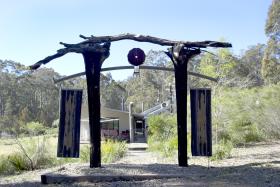
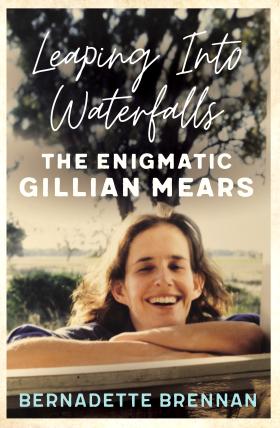
For years, Mears misinterpreted her father’s maxim that ‘time spent in reconnaissance is seldom wasted’ as meaning that one should value remembrance and give careful consideration to one’s past. She wrote about the misinterpretation in her letters, diaries, essays and fiction, smiling wryly at herself because there was nothing she treasured more than dwelling in the past, always with fondness and regret. She amassed the material that would become her archive as an affirmation of the importance of her past and a defence, perhaps even a plea, against being forgotten.
My first full sweep of the archive, which took more than a year, gave me enough notes for a four-volume biography. Throughout 2020, with Covid-19’s enforced isolation, I slashed and shaped the material. Leaping into Waterfalls: The Enigmatic Gillian Mears is published this month. Meanwhile, as I write this essay during Sydney’s extended lockdown, I find myself once again scouring the Library’s manuscript catalogue, my archive fever unabated.
Bernadette Brennan is the author of the award-winning A Writing Life: Helen Garner and Her Work, and the newly published Leaping into Waterfalls: The Enigmatic Gillian Mears. She is the recipient of the Copyright Agency's inaugural Fellowship for Non-Fiction Writing.
This story appears in Openbook Spring 2021.


